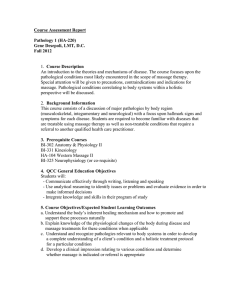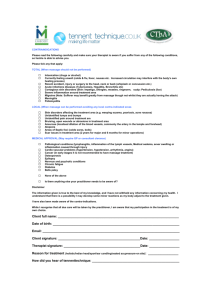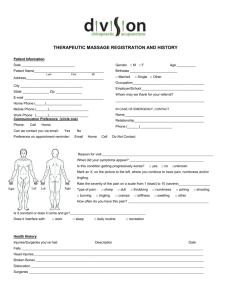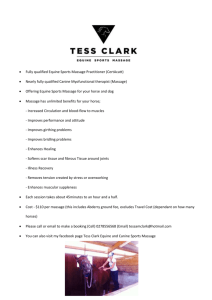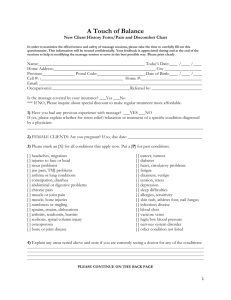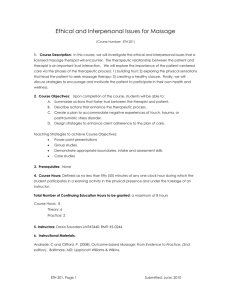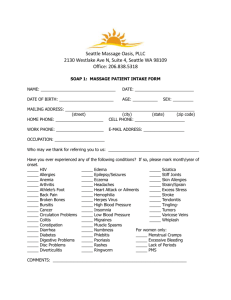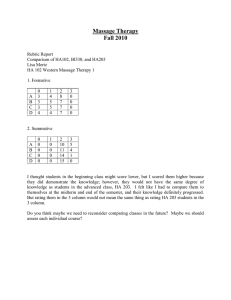Course Assessment Report Western Massage 3 (HA-202) Gene Desepoli, LMT, D.C. Fall 2012
advertisement
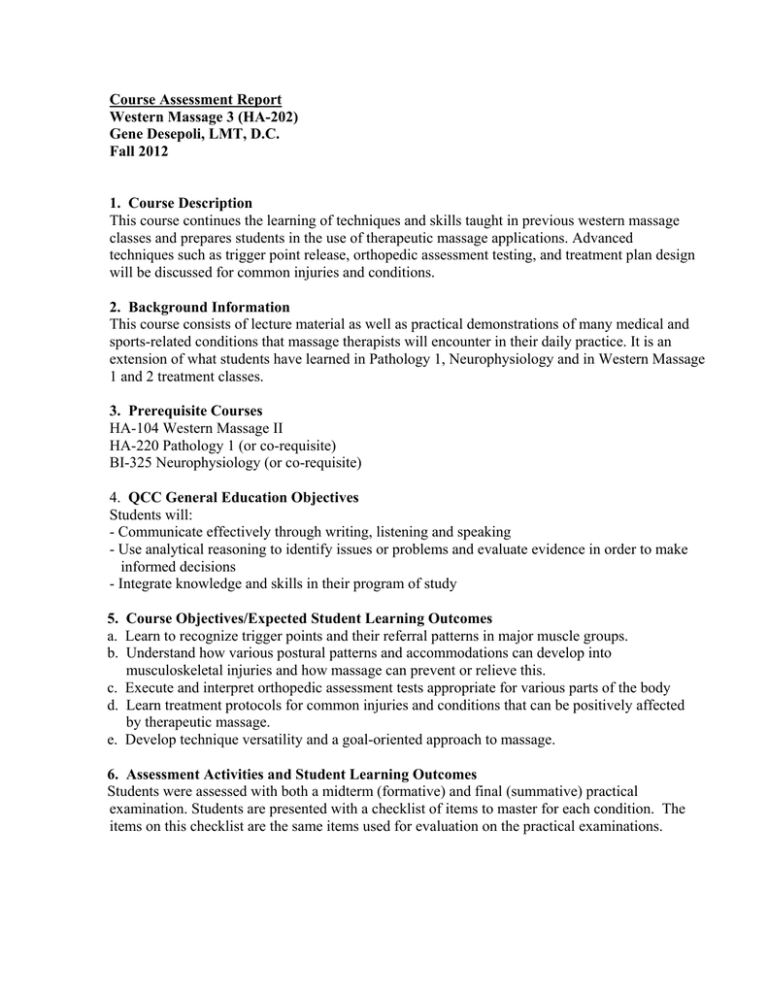
Course Assessment Report Western Massage 3 (HA-202) Gene Desepoli, LMT, D.C. Fall 2012 1. Course Description This course continues the learning of techniques and skills taught in previous western massage classes and prepares students in the use of therapeutic massage applications. Advanced techniques such as trigger point release, orthopedic assessment testing, and treatment plan design will be discussed for common injuries and conditions. 2. Background Information This course consists of lecture material as well as practical demonstrations of many medical and sports-related conditions that massage therapists will encounter in their daily practice. It is an extension of what students have learned in Pathology 1, Neurophysiology and in Western Massage 1 and 2 treatment classes. 3. Prerequisite Courses HA-104 Western Massage II HA-220 Pathology 1 (or co-requisite) BI-325 Neurophysiology (or co-requisite) 4. QCC General Education Objectives Students will: - Communicate effectively through writing, listening and speaking - Use analytical reasoning to identify issues or problems and evaluate evidence in order to make informed decisions - Integrate knowledge and skills in their program of study 5. Course Objectives/Expected Student Learning Outcomes a. Learn to recognize trigger points and their referral patterns in major muscle groups. b. Understand how various postural patterns and accommodations can develop into musculoskeletal injuries and how massage can prevent or relieve this. c. Execute and interpret orthopedic assessment tests appropriate for various parts of the body d. Learn treatment protocols for common injuries and conditions that can be positively affected by therapeutic massage. e. Develop technique versatility and a goal-oriented approach to massage. 6. Assessment Activities and Student Learning Outcomes Students were assessed with both a midterm (formative) and final (summative) practical examination. Students are presented with a checklist of items to master for each condition. The items on this checklist are the same items used for evaluation on the practical examinations. 7. Data Collection instruments A rubric was created and given to students at the start of the semester. The rubric is identical for both the formative and summative assessments. 8. Goals My goal was to have students achieve 75% proficiency on the items found on both the formative and summative evaluations. Proficiency is defined as scoring at least a 3 on the rubric (3=proficient, 4=distinguished). There were 16 students enrolled in the class. The percentage of students who achieved proficiency is listed below. The letter next to each item corresponds to the course objectives listed in number 5 above. Item Pathology Causes/Risk Factors Signs and Symptoms (a) History Assessment (b)(c) Use of Modalities Massage Treatment (d)(e) Stretching/Strengthening Home Recommendations Prognosis Formative 75% 81% 81% 94% 75% 94% 100% 94% 88% 100% Summative 82% 94% 88% 100% 94% 100% 100% 88% 88% 100% 9. Analysis and interpretation of assessment results There was improvement in all areas except (stretching/strengthening) when comparing the formative to the summative evaluations. I attribute this, partially due to the students being more familiar with the format of the examination, (the format of the formative-midterm is exactly the same as the summative-final evaluations) as well as student mastery of the material. 10. Evaluation of the Assessment Process Students typically do well in this course. They have already encountered most of the pathologies while taking Pathology 1. This course reviews those pathologies and adds the logical approach to the practical treatment of each condition. I feel that the use of the checklist, as well as the rubrics work very well to assess students competency. 11. Resulting Action Plans Continue to use said checklist and rubrics for future courses. 12. Student artifacts See attached documents
